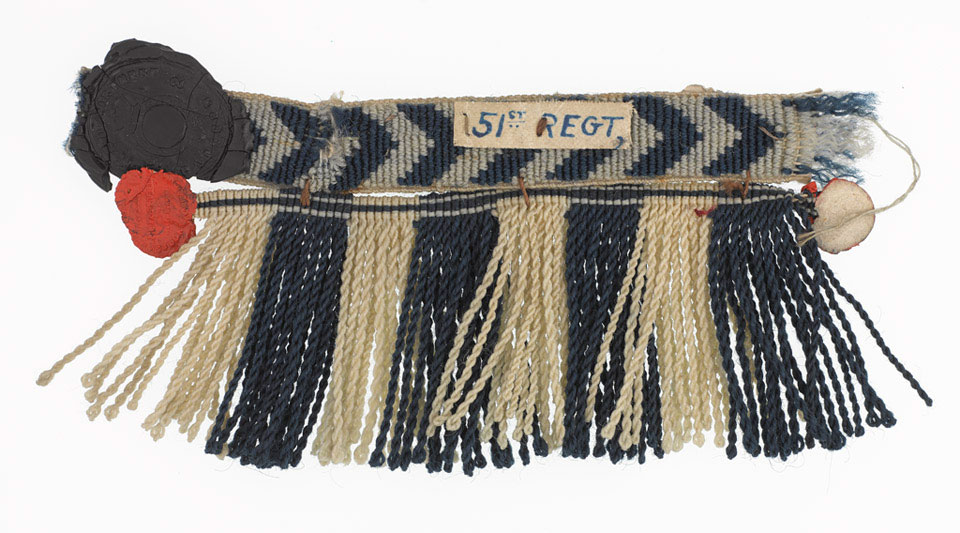
Online Collection
« Prev - 1 of 1 results - Next »
Lace and fringe sample, drummer, 51st (2nd Yorkshire West Riding) Regiment of Foot, sealed pattern 1860
White worsted lace 5/8 inches in width, bearing a blue chevron design. 1.75 inch long fringe of twisted worsted of white and blue.
A 'sealed pattern' is a prototype of any item that the British Army issued to soldiers. It provided clothing or equipment suppliers with an example to copy.
Formed in 1755 for the Seven Years' War (1756-1763), it was known as the 51st (2nd Yorkshire West Riding) Regiment from 1782. When it became a light infantry regiment in 1809 it was renamed the 51st (2nd Yorkshire West Riding) Regiment of Foot (Light Infantry). Under the Childers Reforms of 1881, it amalgamated with the 105th Regiment of Foot (Madras Light Infantry) to form the King's Own Yorkshire Light Infantry. In 1968 further amalgamations led to the formation of the Light Infantry which became The Rifles in 2007.
In 1860, when this fringe sample was sealed, the regiment was in India. It had been sent there in 1857 to help suppress the Indian Mutiny (1857-1859) and was still there for the Ambela Campaign in 1863.
NAM Accession Number
NAM. 1963-12-167--51
Copyright/Ownership
National Army Museum Copyright
Location
National Army Museum, Study collection
Object URL
https://collection.nam.ac.uk/detail.php?acc=1963-12-167--51


